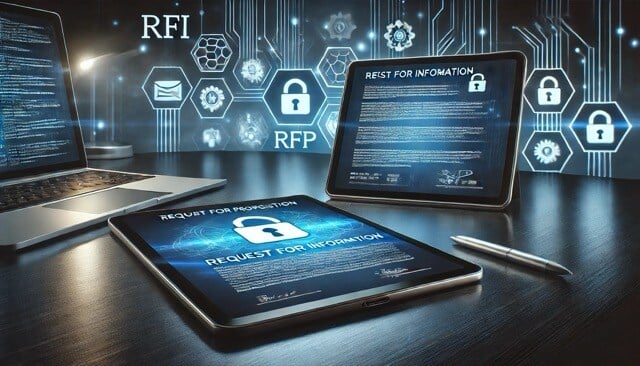The Shift from Compliance-Driven GRC to Dynamic Cyber Risk Management
The world of cybersecurity has undergone a dramatic transformation, moving beyond simple checklists and technical jargon. The focus has shifted from siloed governance, risk, and compliance (GRC) exercises to cyber risk management that aligns security with business priorities. This transition was a key topic in the recent webinar, The Next-Gen CISO’s Guide to Cyber ROI, where experts discussed how organizations must adopt a risk-first mindset rather than a compliance-driven approach.
Traditional cybersecurity programs operated in a "Whack-a-Mole" fashion, aiming to patch vulnerabilities and maintain compliance. However, this "small g, small r, large C" mentality is no longer sufficient. The reality is that a 100% compliant system is a fallacy. A dynamic cyber risk management approach prioritizes business impact, helping organizations allocate resources effectively to reduce risk.
Quantified Cyber Risk: Speaking the Language of Business
One of the most significant changes in CISO strategy is the move toward quantified cyber risk management. Early security tools were merely checklist engines, but today, advanced cyber risk quantification (CRQ) allows security leaders to demonstrate ROI and risk reduction in financial terms.
Rather than presenting technical concerns, modern CISOs must frame their initiatives around business value. For example:
- Instead of discussing data center consolidation as a security improvement, position it as a cost reduction per unit initiative.
- Instead of listing vulnerabilities, quantify potential financial losses tied to specific cyber risks.
- Use business-relevant units like "cost per transaction" or "earnings per share" to communicate risk impact effectively.
By leveraging cyber risk benchmarking, CISOs can compare their organization’s risk posture against industry peers, further reinforcing the necessity of investments in cybersecurity.
Read more about the CISO’s reporting structure here.
Navigating the Complex Cybersecurity Compliance Landscape
Cybersecurity compliance has rapidly evolved from minimal oversight to stringent regulations. Today, security leaders must contend with new mandates such as the SEC Cybersecurity Rule and global regulations like the EU NIS 2 Directive. This complexity makes compliance automation essential.
Key challenges include:
- Managing compliance across multiple jurisdictions.
- Keeping pace with rapidly changing regulations.
- Avoiding inefficient manual audits and redundant efforts.
A "test once, use many" approach to frameworks like NIST 800-53 enables organizations to baseline security controls and apply them across multiple standards, streamlining audits and ensuring continuous compliance.
Cyber Risk Benchmarking and Data-Driven Decision-Making
To secure executive buy-in, CISOs must move beyond subjective risk assessments and support their strategies with data-driven insights. Leveraging actuarial cyber loss data, organizations can:
- Benchmark their cyber risk against industry peers.
- Customize risk assessments with internal and external data.
- Track and demonstrate continuous improvement over time.
CyberStrong, for example, uses the largest cyber loss dataset to enhance cyber risk benchmarking, helping CISOs justify security investments with credible metrics.
Understanding Your IT Environment: Asset Visibility and Risk Metrics
A fundamental challenge for many organizations is a lack of complete IT asset visibility. Without a clear inventory of assets, security teams struggle to:
- Determine which assets are most critical to business operations.
- Identify rogue or non-compliant devices.
- Prioritize remediation efforts effectively.
Many organizations still rely on spreadsheets to manage cybersecurity programs, leading to inefficiencies and errors. Modern cyber risk management platforms replace spreadsheets with a system of record, automation, and sophisticated analytics to provide real-time insights into security and compliance posture.
Key Takeaways for CISOs in the Modern Era:
- Embrace Dynamic Cyber Risk Management – Move beyond compliance-driven security and focus on mitigating business risks.
- Quantify and Financialize Risk – Use cyber risk quantification (CRQ) to demonstrate security ROI in financial terms.
- Speak the Language of Business – Frame security initiatives in terms that resonate with executives and board members.
- Navigate Regulatory Complexity with Automation – Implement compliance automation to streamline audits and meet evolving regulations.
- Leverage Cyber Risk Benchmarking – Compare cyber risk posture against industry peers to guide strategic investments.
- Gain IT Asset Visibility – Develop a comprehensive understanding of assets and their criticality to risk management.
- Move Beyond Spreadsheets – Adopt modern cyber risk management platforms for real-time risk analysis and automation.
The Future of Cyber Risk Management: A Business-Centric Approach
The role of the CISO has evolved from a technical expert to a strategic business leader. By embracing quantified cyber risk, leveraging data-driven decision-making, and navigating compliance automation, CISOs can ensure their organizations are resilient against an increasingly complex threat landscape.
How is your organization evolving its cyber risk management strategy?





.png)
.png)
.png)
%201.png)
.png)




